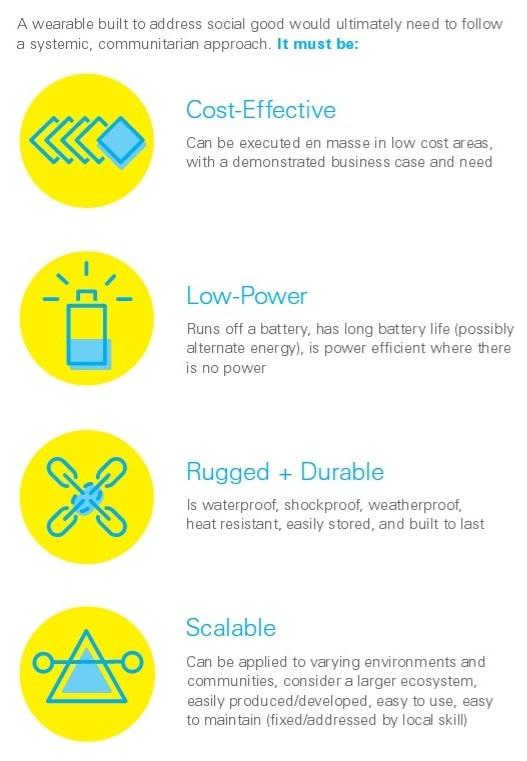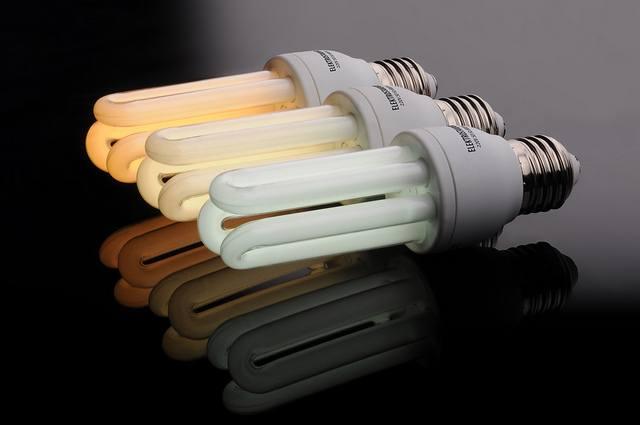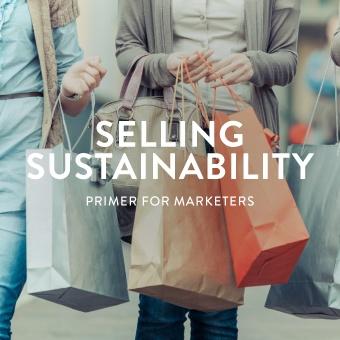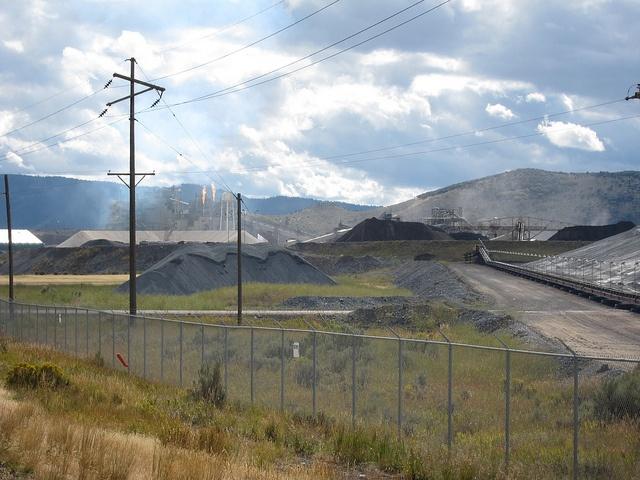Walmart Adopts Groundbreaking Animal Welfare Policy


Walmart, the largest food retailer in the U.S., recently announced a new animal welfare policy. It’s a policy animal rights groups are calling groundbreaking as it engages the company’s entire supply chain and covers a wide range of issues from antibiotic use to housing systems.
The policy applies to all of the company's U.S. operations, including its subsidiary, Sam’s Club. Back in October, Walmart announced its commitment to making its food supply chain more sustainable.
The new policy includes the responsible use of antimicrobials, including antibiotics. It asks suppliers to adopt and implement the Judicious Use Principles of Antimicrobial Use from the American Veterinary Medical Association (AVMA), which states that when veterinarians decide to use antimicrobials they “should strive to optimize therapeutic efficacy and minimize resistance to antimicrobials to protect public and animal health and well-being.” In other words, antimicrobials should be limited to animals that are sick or at risk.
The policy asks suppliers to be proactive in eliminating animal abuse, including:
- Reporting cases of animal abuses and taking corrective action.
- Finding and implementing solutions to address concerns about housing systems, painful procedures, and euthanasia or slaughter.
- Providing progress reports to Walmart and publicly reporting on their corporate animal welfare position annually.
“Walmart is committed to selling products that sustain people and the environment,” said Kathleen McLaughlin, president of the Walmart Foundation and senior vice president of Walmart sustainability, in a statement. “We have listened to our customers, and are asking our suppliers to engage in improved reporting standards and transparency measures regarding the treatment of farm animals.”
Walmart’s new animal welfare policy embraces the Five Freedoms of animal welfare by the Farm Animal Welfare Council:
- Freedom from Hunger and Thirst – by providing ready access to fresh water and a diet to maintain full health and vigor.
- Freedom from Discomfort – by providing appropriate environment including shelter and a comfortable resting area.
- Freedom from Pain, Injury or Disease – by ensuring prevention or rapid diagnosis and treatment.
- Freedom to Express Normal Behavior – by providing sufficient space, proper facilities and company of the animal’s own kind.
- Freedom from Fear and Distress – by ensuring conditions and treatment which avoid mental suffering.
Mercy For Animals led intense campaigning against Walmart
The animal welfare group, Mercy For Animals (MFA), led what it describes as an “intense campaign” against Walmart. Part of that campaign included footage of “extreme” animal abuse at Walmart pork suppliers across the U.S. taken by MFA. The campaign also included over 150 protests at Walmart stores, full-page newspaper ads, mobile billboards circling the company’s headquarters in Arkansas, 640,000 petition signatures on Change.org and celebrity endorsements.
Walmart’s new policy proves that the retail giant is capable of appropriately responding to campaigns led against it. The wide reach of the company signals that the “era of confining farm animals in cages will come to an end,” as Wayne Pacelle, president and CEO of the Humane Society of the U.S., wrote in a blog post. That's good news for the millions of farm animals across America.
Image credit: Flickr/Mike Mozart
A Swedish City's Plan to Pick Up and Move to Avoid Disaster


Have you ever just wanted to pick up and leave the foundation you call home? Kiruna knows the feeling.
Kiruna, a town in northern Sweden, built its riches upon the vast seam of iron ore, but the massive mine is now sinking the city of 23,000 residents. Now faced with a crisis, the town of Kiruna is moving to avoid catastrophe.
Northern Sweden is not the most welcoming place to build a city. With long, brutal winters and short, mild summers, Kiruna’s climate doesn’t exactly scream city material, but the iron resources that lie underneath it scream Mecca.
The Sweden-owned Luossavarra-Kiirrunavaara AB mining company (LKAB) founded Kiruna in 1900 and quickly turned it into the largest iron ore extraction site in the world, producing 90 percent of all the iron in Europe. The company’s iron supply on the outskirts of the town was diminishing, so in 2004, LKAB thought it best to dig its shafts toward the city’s heart, leaving the buildings vulnerable.
For more than 10 years, residents of Kiruna have wondered what the fate of their town would be. Residents have put their lives on hold, unwilling to make investments in a town that they know could up and vanish at any moment. They finally have an answer.
The town, thanks to visionary architects, is moving 1.86 miles east of its current location. A new town square is already under construction, and LKAB allocated more than $612 million for the project that’s expected to build a high school, fire station, community center, library and swimming hall. The mining companies will also compensate homeowners the value of their house plus 25 percent.
Kiruna is due for a major facelift: The city will be hardly recognizable once the construction is completed. The town’s suburban, traditional-housing style will be vetted to an apartmentalized and centralized neighborhood that is expected to encourage a younger atmosphere.
The new Kiruna will have narrower streets to protect pedestrians from the wind, making the harsh Scandinavian winters just a little more pleasant. The plan will turn the city into a more walkable district, but it won’t happen overnight. Officials have suggested that the city will take 85 years to fully escape the mine. The town isn’t as much moving as it is inching east with each new building sprouting up and each old one falling down.
Bits and pieces of old Kiruna will be preserved into the new city, which will keep the same name, including Sweden’s prettiest public building, Kiruna Church, as voted by the Swedish people in 2001.
Kiruna could see great success from this permanent solution to run from a disaster. Anthropologists hope women will be encouraged to stay in the male-dominated region and also hope tourism will increase once the city’s makeover is completed.
The city could also set the precedent and be a trailblazer for other areas facing either rough economic or climate issues.
Sea-level rise is likely to destroy high-density areas if there isn’t action taken to minimize the harm. Major moneymaking cities like Miami, New Orleans and Venice are all susceptible to annually-increasing sea-level rise due to a changing climate. Popular tourist countries like the Maldives and Bangladesh could also be washed away if left alone.
One thing's for sure as Kiruna moves: The Northern Lights will be just as beautiful 1.8 miles to the east.
Image credits: 1) KERENHAPPUCH C and 2) James Losey
Lifebits: UNICEF's Wearable Technology That Will Save Lives


Hey, Fitbit-wearers: Tracking calories is cool, but saving lives is legit. Enter Lifebits. The wearable technology you can invent to save lives. (It doesn’t matter that it sounds like a cereal brand.)
A recent study shows that fitness tracker owners stop using the wearable devices after an average of six months. UNICEF says that these unwanted wearables can save lives in developing countries.
The organization just joined forces with design firm Frog and smartphone chip maker ARM. They created a global competition to challenge designers, technologists, scientists and all other badasses (aka, experts in any field) to join forces and create “Wearables for Good.”
The mission? Find solutions to problems plaguing women and children in developing countries. Why wearables? Because technology is the newest secret weapon in the war chest of ways to defeat bad bacteria, natural disasters and all other less than ideal things in the world.
The effort is part philanthropy and part business. UNICEF states: “It is predicted that the revenue from smart wearable devices will generate $22.9 billion in revenue by 2020. As it grows, the market will expand beyond devices aimed mostly at consumers living in developed economies to include products and services that support the needs and aspirations of people around the world living in developing markets or in low-resource geographies.”
ARM hopes to improve its product and licensing sales, as well as generously suggest that its processor chips be included in wearables. These new T4D (technology for development) campaigns are hot and also make for a good hashtag: #T4D.
So, what’s the problem, and how can you help? So glad you asked. Here’s the list of primary problem categories with examples:
1. Alert/Response
Problem: Fires scourged three Nairobi slums for three months in 2011. An estimated 25,000 people were left homeless. Fires are common in slums due to indoor stoves, trash burning, faulty wires and cold people trying to stay warm. Homes are close together, so fires spread rapidly. Alleys between homes are tiny, so evacuation and fire control are difficult and chaotic.Need: A warning system that tells the community to “get outta here!” via alarms and mobile texts.
2. Diagnosis/Treatment/Referral
Problem: Children under 5 are most likely to die from infections, pneumonia, diarrhea, malaria, measles and HIV/AIDS. Around 70 percent of these children could be easily cured if they saw doctors sooner. Every day, 1,000 women die from issues related to childbirth; 99 percent of them are in developing countries. This is not okay.Need: An easy way to non-clinically review and diagnose viral and bacterial infections.
3. Behavior change
Problem: 1 in 4 children under 5 years old have stunted growth due to malnourishment. The most crucial hold-your-breath time is during pregnancy and the child’s first two years.Need: Find a way to provide mothers and babies with nutrition, access to basic health care, and instruction on feeding practices for children. They don’t have Flintstones gummies.
4. Data collection/Data insights
Problem: An estimated 230 million children have undocumented births. Without a government birth certificate, the child may prematurely enter marriage, the labor market or armed forces.Need: Find a way for children to be officially registered despite living in the middle of nowhere, having limited supplies and lacking data collection capabilities.
Finding a sustainable, wearable solution
Once the wearables are designed and presented, judges will ask questions such as: Is the wearable comfortable, is it necessary, is it sustainably powered? Can it be scaled? How much of an improvement is it? Is it cost effective and easily maintained? Would you want your mom to use it?
Pressing challenges the judges are likely to focus on include:
- Geographic distances to facilities
- Low-quality services
- Inadequately skilled personnel
- Time constraints
- Competing economic motivations
- Social marginalization
Feeling like you’re in a leg lock? Don’t give up yet. The fashion fun is about to begin.
Wearables can be worn inside the body (cochlear implants, pacemakers, ingestible devices), on the body (head, ears, eyes, chest), or by a hospital bed near the body.
They can be low tech or high tech. Electronics are optional. A wearable is simply something worn as a solution to a problem. One low-tech device UNICEF uses (pictured right) is a multicolored arm measuring tape that shows at a glance whether a child is receiving enough nutrition. Green is good, yellow is concerning, red means “Get that kid to a doctor!”
Last year Intel also hosted a Make it Wearable competition, and the winners had incredible designs: a wearable drone camera that can fly, a low-cost robotic hand for amputees, and a glove that records data from goods handled.
Those are awesome devices for first-world countries. Now UNICEF is upping the ante by saying “Okay, now go save lives” and generally without electricity, or water, or access to anything but dirt. I can’t wait to see what’s invented. It’s going to be mind-blowingly simple, beautiful and, above all, life-saving.
This is the first project launched by ARM and UNICEF. ARM can’t get enough of UNICEF though and also agreed to work with the organization’s 14 Innovation Labs working on 270 projects. Most labs are located in developing countries. Each lab brings together business, universities, governments and civil society to develop solutions.
Ready to get started? Click here to sign up. If you win, you’ll receive $15,000 in funding and mentorship from ARM and Frog.
Making a wearable for good isn’t on your bucket list? You don’t have to work for UNICEF or participate in a competition to help innovate. UNICEF’s Innovate for Children website states that the organization partners with centers around the world in various development and implementation phases. You might find a project that fits your niche.
In the words of Kid President “This is life people! You’ve got air coming through your nose! You’ve got a heartbeat! That means it’s time to do somethin’! […] This is your time, this is my time. This is our time. We can make every day better for each other. We’ve got work to do. […] We can cry about it, or we can dance about it. You were made to be awesome. Let’s get out there! It’s everybody’s duty to do good and give the world a reason to dance.”
Image credits: UNICEF Wearables For Good Handbook and website
Green Initiatives Improve a Brand's Perceived Value


By Lewis Robinson
These days, if your business isn’t going green, it’s going extinct. Consumers aren’t only looking for businesses that offer high-quality products and competitive prices; they want to know that the organizations that take their money are going to use it to make the world a better place. Recent studies have found that green initiatives can significantly improve a brand's value. Because of this trend, more and more corporations are including green initiatives in their marketing campaigns, in order to show that they are willing to play a part in the push to preserve and sustain the environment.
But beyond simply improving company reputation, taking on an environmentally sound and responsible position benefits businesses in more practical ways as well. For example, many organizations have found that by taking steps to reduce energy use, they end up saving a great deal of money.
These efforts at improving sustainability give brands a boost in value, and help businesses to find success and longevity in their respective markets.
Case studies
One such business that has seen improvements in value perception through its green initiatives is Honda. Due to the rising cost of petroleum fuel, Honda turned its attention toward finding a way to manufacture a more fuel-efficient car. As it implemented this particular green initiative, customers took note, and Honda’s sales figures rose dramatically. Compared to numbers from four years prior, the company's figures improved by 28 percent after launching more fuel-efficient models.
A similar effort was made by GE in 2005 -- when the company publicly declared that it intended to take on clean technology to reduce environmentally harmful greenhouse gas emissions, and also adapt green technology for other uses, such as in locomotives, wind turbines and jet engines. The company saw a rise in consumer satisfaction, and its revenue rose by $6 billion.
Making a difference
As the benefits of sustainability became more apparent, other companies began to follow. Today, green technology, clean technology and sustainable ideas are commodities that many venture capitalists are looking to invest in.
If your business hasn’t already begun to adopt green initiatives -- and talk about them in your marketing campaigns -- you might be confused as to how to go about doing it. The good news is that there are a number of green initiatives that are simple, cost effective and environmentally impactful that you can institute starting today. Here’s how:
1. Start measuring
The easiest way to put your company on the path to sustainability is to reduce your energy use. However, in order to be able to figure out how you can cut back, you’ll first need an accurate idea of how much energy is being used, and where. Keep track of how much is being spent on gas, electric, water and other energy-associated costs, and get a feel for where your organization may be using more energy than it should. When you have this data compiled and presented, it will be much easier for you to know where you should make changes.
2. Cut down on paper use
Despite the reputation that it has gained over the years, paper really is a sustainable resource. However, when 45 percent of office paper ends up being thrown away on the same day that it’s printed, it may make sense for some organizations to switch over to a paperless office environment. Even if you don’t choose to go entirely paperless, consider reducing paper use wherever possible by relying instead on electronic communication. Remember, even if you recycle all of your paper, there is still an energy cost associated with it.
3. Embrace alternative energy
The electric grid is not the only way to get electricity for your company; by investing in on-site solar cells, you’ll be able to generate some (or all) of your own clean energy directly from the sun. If buying and installing solar panels doesn't seem like a possibility, consider purchasing renewable energy credits (RECs) from your local utility provider.
4. Involve employees
Although we tend to think of businesses as being run by CEOs and other management, the reality is that it is the employees who actually determine an organization’s direction. If you want your company to be one that recycles, conserves and protects the environment, you had better make sure that the employees are on board. Make things fun by setting energy-conservation goals and providing rewards when those goals are met. The fact is that most people are willing to do what they can to help the environment, but you have to be willing to meet them halfway.
Loud and proud
Once you have begun making strides toward environmental conservation, don’t be shy about letting the world know. Whatever your company does in order to save, sustain, clean, preserve and be efficient, tout that horn and show it off. From ads, to social media pages, to press releases and even your brand logo, take every opportunity to tell your customers exactly how you’re helping save the world. Doing so will aid in lead generation, customer retention and overall company reputation.
Image credits: 1) Flickr/Intel Free Press 2) Flickr/Rennett Stowe 3) Flickr/Anton Fomkin
Lewis Robinson is an eco-business consultant specializing in small business and non-profits. He’s helped start multiple corporations and currently freelances as a writer and business consultant.
Every Sustainability Acronym, Explained


We often hear that sustainability is a hot mess of acronyms that are intimidating to newcomers. We agree. Here's a comprehensive list of acronyms and abbreviations every sustainability professional should know.
Agenda 21
A non-binding, voluntarily-implemented action plan of the United Nations with regard to sustainable development.
AODP
The Asset Owners Disclosure Project survey of investors on climate actions
BCI
The Better Cotton Initiative, guidance on fair labor and sustainable cotton production
B Corp
B Corp, or B Corporation, is a business certification from B Labs.
Sometimes people call Benefit Corporations "B corps," too. A benefit corporation is a legal business construct, like an LLC or C Corp, except it has sustainability at its core.
BREEAM
Building Research Establishment Global's Environmental Assessment Method for green building
BSR BSR is a global nonprofit organization with member companies and a widely attended annual conference.
CCS
Carbon capture and storage (or sequester) projects
CDP
Formerly the Carbon Disclosure Project (now just CDP); issues corporate surveys on climate change, water and forestry, with additional supply chain reporting guidance.
CDSB
Climate Disclosure Standards Board; provides guidance on climate reporting, and proposed stock exchange listing rule on climate emissions reporting.
CITES
Convention on International Trade in Endangered Species
CO2e
Carbon dioxide equivalent -- frequently used in emissions reporting.
COP
Communication on progress -- a reporting requirement of being a signatory to the United Nations Global Compact.
CSR or CR
Corporate social responsibility or corporate responsibility, commonly used interchangeably
DFPRW
Declaration on fundamental principals and rights to work
DJSI
Dow Jones Sustainability Index
EEIC
Electronic Industry Citizenship Coalition: a code of conduct for the electronics supply chain
EIA
Environmental Impact Assessment
EPD
Environmental product declaration
ESG
Environment, social and governance disclosure. Used interchangeably with CSR.
FiT Feed-in tariff, the price renewable energy generators are paid by utility companies for their energy
FLA
Fair Labor Association
FSC
Forest Stewardship Council, creates standards for sustainably-harvested woods and fibers.
FT
Fair Trade
G3/G3.1
Global reporting initiative's third generation of sustainability reporting guidelines
G4
Global reporting initiative's fourth generation of sustainability reporting guidelines
(for more info check out our courses)
GEP
Gender equality principals
GHGP
Greenhouse gas protocol for emissions reporting
GIIRS
Global impact investing rating system; third-party ratings for impact investments
GISR
Global Initiative for Sustainability Ratings
GRI
Global Reporting Initiative
ILO
International Labor Organization core labor standards
IR/IIRC
Integrated reporting framework of the International Integrated Reporting Council
ISO 14001
International Standards Organization's Environmental Management System
ISO 26000
ISO social responsibility standard
ISO 31000
ISO risk management standard
International Union for Conservation of Nature, helps the world find
pragmatic solutions to our most pressing environment and development challenges
See also ICUN Red List of threatened species
KPI
Key performance indicator
LCA
Lifecycle assessment or Lifecycle analysis
LEED
Leadership in Energy and Environmental Design for green buildings
MDGs
United Nations Millennium Development Goals
OSHA
U.S. Occupational Health and Safety Administration, provides standards for workplace safety
RECs
Renewable Energy Credits -- similar to carbon offsets, but just for renewable energy
REDD
Reducing Emissions from Deforestation and Degradation, a U.N. forestry program
RSPO
Roundtable on Sustainable Palm Oil
SASB
Sustainability Accounting Standards Board; offers sustainability accounting standards by industry
SEA
Strategic Environmental Assessment
SFI
Sustainable Forestry Initiative
SDGs
U.N. Sustainable Development Goals
SRI Socially responsible investing
ULE
UL Environment, a standards board
UNDHR
United Nations Declaration on Human Rights
UNGC
U.N. Global Compact; companies endorse and report on their progress in meeting 10 CSR principals
USGBC
U.S. Green Building Council; responsible for the LEED standard for green building
VCS
Verified carbon standard, carbon offset certification body
Bonus lists for related industries
Clean Energy Finance 101 from the Yale Center for Business and the Environment Glossary of Energy Efficiency Terms from Conservation Energy Group Energy EducationFor the science behind the energy sector from the University of Calgary
--
All right, you made it this far. What am I missing? Tweet @jenboynton to send me your suggestions, and I'll add them to the list!
h/t to Tracey Rembert who shared a version of this list with Ceres participants
Image credit: DAVID MELCHOR DIAZ, Flickr
Developing Nations’ Renewable Investments to Exceed Those of Developed World


When President Barack Obama signed his historic climate change agreement with China last year, there were those among his opponents who felt he had given away too much without asking for enough in return. Never mind that the U.S. has been emitting carbon far longer and has already had the opportunity to bring most of our population out of poverty (at least compared to China).
Yes, the U.S. set a 26 to 28 percent reduction target for 2025, while China has promised to achieve a declining emissions trajectory starting in 2030. But let’s look at what China is doing. Last year, it spent $83 billion on renewable energy. That’s not only a 39 percent jump over last year and a new record, but it’s also twice what we spent in the States.
China is not alone in this. Countries all across the developing world are making huge investments in renewables. In some cases, they are leapfrogging traditional utility infrastructure, much as they did with cell phones.
According to Bloomberg New Energy Finance, the combined clean energy investment of developing countries, including China, Brazil, India and South Africa, totaled $131 billion in 2014, only 6 percent less than the combined total for developed countries. The gap is narrowing and is expected to close soon. Then, we will be the ones doing the chasing.
By 2030, $7 trillion will be invested in new energy systems, two-thirds of which will come from developing countries. Over 60 percent of that new generation capacity will be in the form of carbon-free renewables.
The total OECD energy capacity projected by 2030 is 3,700 gigawatts. By contrast, non-OECD capacity is expected to reach nearly twice that total, or 7,000 GW. The report identifies Kenya, Peru, Taiwan, Morocco, Vietnam, Pakistan and the Philippines as the top attractors of clean energy investment.
What’s the motivator? It’s the fact that 1.3 billion people in the developing world have no access to reliable electricity. Half of them are in sub-Saharan Africa. Renewable energy, which can be installed in smaller increments, is likely the most direct path for getting all of these people out of poverty and into the modern era.
If you’re thinking what I’m thinking, we’d better hope that most of that energy is in the form of renewables. If not, our goose will certainly be cooked.
Pew Research projects a 594 percent increase in renewable energy deployment between 2012 and 2030. Compare that to a 69 percent growth in nuclear, and a 30 percent growth in fossil fuels over the same period.
That’s good news, and it is accompanied by more good news that should relieve some anxiety about China. In response to its horrific air pollution crisis, China is cutting coal consumption quite aggressively. Data from Greenpeace shows an 8 percent drop in coal use during the first four months of this year when compared to last year.
Unfortunately, that good news is put into perspective by a recent Scripps Institute report showing that thinning of the Antarctic ice sheets is happening at an accelerating pace. The race goes on, and each passing day brings decisions being made at all levels of society that could tip the scales in one way or another.
Image credit: MainstreamRP: Flickr Creative Commons
Asia's Most Sustainable Cities Prove to Be the Future of Urbanization


By Anum Yoon
This year’s Sustainable Cities Index reported the top 10 sustainable cities of 2015. The Index provided an overview of 50 of the world’s cities and what their performance rankings were in relation to the factors of people, planet and profit – the three pillars of the triple bottom line. Europe dominated the top 10 overall rankings, holding seven of the 10 places. And with good reason: Europe has developed an impressive environmental legislation over the past 40 years. They have continuously demonstrated how improving the environment could drive innovation and job creation, while improving the quality of life for everyone.
But seeing those European cities on the list isn’t what impressed me. I was more fascinated by the fact that the remaining three rankings were held by Asian cities. While no American city made the top 10 list (with Boston holding 15th place), three cities proved that global sustainability is becoming increasingly dependent on the implementation of effective environmental policies in the developed cities of Asia.
Here are the sustainable cities in Asia that were successful in finding a better equilibrium in terms of development and progress:
Seoul: Ranked No. 7
Over the past 60 years, South Korea has grown from a war-torn nation to a major world power, becoming the 13th largest economy in terms GDP. This is quite impressive for a nation with a population of only 50 million. The capital and largest city, Seoul, is the product of this rapid economic growth. With over 25.6 million people living in the metropolitan area, Seoul shares the same problems as other large cities, including detrimental impact on the environment. It seemed the citizens of Seoul faced the choice between an improved quality of life and helping the environment... Or did they?
Forward-thinkers look to the idealized notion of the “ubiquitous city” in order to strive toward becoming a more sustainable city. The key to the ubiquitous city concept is technology. Seoul is a world leader in terms of digital governance and open data. This includes an extensive high-speed Internet network. In a ubiquitous city, the free flow of data allows citizens to understand their impact on the environment, as well as the best steps to take in order to reduce their negative effect. The idea is that, by improving technology infrastructure, urban residents can shape their lifestyles in an eco-friendly manner. An example of this in action is the Personal Travel Assistant system. This system delivers real-time information of the public transportation network. It allows the user to access information on carbon emissions and other green transportation options.
South Korea has taken this idea a step further by initiating a project on a huge scale, with the purpose of building the “smart city” Songdo. This city lies near the Seoul airport and has a future projected population of 2 million. This “city on a hill” has the technology and green space to live up to this moniker. It will successfully sustain an underground system of tubes for disposing of waste, universal broadband, integrated sensor networks, and green buildings to truly make it the “city of the future.”
Songdo may soon become the benchmark that the rest of Seoul will work toward, for achieving both a high quality of living and a sustainable city.
Hong Kong: Ranked No. 8
Hong Kong rose to international prominence in the late 1970s, acting as a trading hub between China and the rest of the world. This led Hong Kong to become one of the world’s financial centers that boasts a high GDP and quality of living. This rapid growth, however, also brought about the age-old problems that go hand in hand with urbanization: pollution and environmental degradation. Hong Kong has thus taken steps to curb these negative effects.
Hong Kong has a Council for Sustainable Development, which operates the Sustainable Development Fund. This fund of $100 million is provided to act as financial support for initiatives that will promote awareness for sustainable development, as well as initiatives that encourage sustainable practices. This promotes the active involvement of the citizenry through nonprofit organizations and educational institutions. Leadership in Hong Kong seems to take the view that individual efforts and policy changes will lead to sustainable growth.
Technology has also played an important role in Hong Kong’s sustainability. Citizens of Hong Kong extensively utilize non-motorized and public transit. The Octopus Smart Card makes it easy for users to pay for public transit as well as parking. The smart card can also be used for grocery stores and vending machines. This convenience and usability makes public transit a more desirable option. There are also laws preventing certain types of personal behavior, such as spitting in public, littering, and consuming food or drinks on any public transportation.
Singapore: Ranked No. 10
Singapore has made tremendous progress since its independence in 1965. Lee Kuan Yew, the country's first prime minister, wanted Singapore to outshine other developed countries in areas of cleanliness and efficient transport systems. Singapore's famous chewing gum ban is one of the many successful environmentally-friendly initiatives that are enforced through the legal system. You're even legally required to flush public toilets in Singapore. It's interesting to note that Hong Kong is one of Singapore's biggest admirers in terms of imposing bans and penalties on certain types of "rude" behavior.
Singapore also has something called the Sustainable Singapore Blueprint, which outlines a cohesive plan of action for all citizens to follow in order to create a more sustainable city. It targets green and blue spaces, transportation, resource sustainability, air quality, drainage, and community stewardship. Much like Hong Kong and Seoul, Singapore relies on advanced technology and a robust public transportation network.
However, Singapore was able to take on a problem unique to its city -- the need to import potable water from Malaysia -- and turned it into an economic strength. Singaporean policies supporting innovation to solve this problem lead to over 100 companies developing a profitable niche industry in collecting rainwater and recycling water. Their technologies have spread around the globe.
Singapore not only relies on technology, but also on its own citizens. The Sustainable Singapore Blueprint emphasizes community involvement in conserving resources and preserving green spaces.
The future of urbanization
It seems that these three cities have some significant similarities:
- Robust and convenient public transportation
- Relatively recent economic growth
- Utilization of advanced technology
- High GDP per capita ($30,000+ GDP per capita)
- Space limitations
Space limitations may be the driving force for these advanced Asian cities and their environmentally friendly innovations. Singapore, Hong Kong and Seoul are all small areas that have space restrictions, and thus high population densities. Where in other places, people can simply spread out (see Los Angeles), these cities cannot. Singapore is a city-state; Hong Kong was historically bordered by not-so-friendly China; and the Seoul metro area is slowly taking over South Korea, with half of the country's population, 25 million people, living in the Seoul metro. Everyone feels the need to live in these cities, even when there is a severe lack of space.
With space constraints, pollution gets worse; there is less green space, more litter and a higher demand for resources. This led these three cities to deal with the sustainability issue in similar ways, which all boil down to infrastructure. Since each city has the wealth to deal with the problem, they do, using technology to improve infrastructure. Infrastructure means more communication between citizens, better recycling efforts, better public transit, better waste disposal and better emissions management.
Image credits: 1) Songdo IBD All others via Flickr - M.Bob & Kenny Teo
Anum Yoon is a writer who is passionate about personal finance and sustainability. As a regular contributor to the Presidio Graduate School’s blog, she often looks for ways she can incorporate money management with environmental awareness. You can read her updates on Current on Currency.
New Report Offers Advice on Selling Sustainability, But Is it Right?


Why is selling sustainability so difficult?
After all “sustainable products, services and behaviors are the future. They are better for business, consumers and the planet, and increasingly consumers are asking for them.”
In addition, “93 percent of global consumers want to see more of the brands they use support worthy social and/or environmental issues, and three out of four teenagers say they want to buy more sustainable products.”
This question and quotes open a new report from BSR and Futerra, aiming to provide an effective framework that marketers struggling with this challenge could use.
However, for marketers losing sleep over the question of how to sell sustainable products and services and wondering if this is the report they’ve been looking for – well, let me just say this, report is not the equivalent of the proof to Fermat's Last Theorem. In other words, your troubles are [probably] not over yet.
Still, the report, titled Selling Sustainability: Primer for Marketers, is a worth read for anyone interested in fusing marketing and sustainability. This is, after all, “the output of a long-standing collaborative effort with the Sustainable Lifestyles Frontier Group and our eight member brands – AT&T, Carlsberg, eBay, Johnson & Johnson, L’Oreal, McDonald’s, Wal-Mart and Waste Management.”
At the heart of the report is framework including three components: offering consumers more value from sustainability, building functional, emotional and social benefits, and taking into consideration that timing matters.
The first component is value. The authors of the report write: “For most sustainable products and behavior campaigns the hard question of 'what’s in it for the consumer?' is still largely unanswered.” To create and deliver greater value for consumers out of sustainable products, marketers need to reduce barriers (i.e. lack of skills, motivation, infrastructure or beliefs) and generate more benefits (functional, social, emotional).
A good example would be electric cars. To make electric cars more valuable for consumers, companies need to reduce barriers like price (see the example of the 2016 Chevy Volt) and range anxiety (building a network of high-speed charging stations) as well as to increase the benefits such as enhancing their fuel-cost savings (functional) or making them status symbols (social).
The second component is an elaboration of the first one, explaining in more detail what functional, social and emotional benefits actually are in the context of sustainability. While this is not part of the report, I believe the best way to explain it is through the lens of the ‘job-to-be-done’ concept, as “designing an innovative customer value proposition begins with genuinely understanding the customer's 'job-to-be-done.'”
This concept is based on the idea that people don’t really buy products or services. They “hire” them to do a job, or as Prof. Theodore Levitt famously put it: “People don’t want to buy a quarter-inch drill. They want to buy a quarter-inch hole.” There are three types of jobs-to-be-done: functional (getting a specific task done or achieving a functional goal), social (how the consumer wants to be perceived by others), and emotional (how the customer feels or wants to feel).
The report’s advice to marketers is to think about creating value by reducing barriers and offering benefits, using these three levels – functional, beneficial and emotional. Then, it suggests, “your value proposition should emerge stronger and clearer.”
The final component is timing – making sure that you reach consumers in the right time and the right place. The right time seems to be important in particular because, as the report explains: “Receptiveness to sustainability messages fluctuates throughout the day. For behavior change campaigns it’s especially important to track these changes. The best moment to affect a habit, like recycling, is to reach the consumer at their point of behavior (PoB).”
Now, the question is whether applying this framework could help marketers overcome “the difference between what consumers say in surveys, and what they go on to actually do.” I believe the answer is no.
Here’s why: First, I think the starting point is not the right one. I don’t think the surveys the report quotes actually reflect the public’s attitudes, or that the only problem is that we didn’t find a way yet to translate these attitudes into action. I believe we need to take findings like “93 percent of global consumers want to see more of the brands they use support worthy social and/or environmental issues” with a grain of salt. Sure, most people would like that, just like most people would like to see world peace, but what does it actually mean in reality? Unfortunately, not much.
Second, reality is messy and complex, as we could learn from a recent report in the New York Times, in which writer Lawrence Ulrich argues, “With bargain gasoline prices putting more money in the pockets of Americans, owners of hybrids and electric vehicles are defecting to sport utility vehicles and other conventional models powered only by gasoline.”
Sure, we can address these situations in terms of the need to reduce barriers (i.e. make hybrid and electric cars cheaper) and find how they can offer more value (functional, social or emotional). Yet, I believe that to truly change consumer behavior at scale, when it comes to sustainability marketers need more than that – they need to think in terms of changing the culture, not their products.
Based on Curt Lewin’s proposal that a person’s behavior is a function of both their personality and their environment (B = f (P,E)) I would suggest that any attempt to reach significant results in selling sustainability should focus on a more systematic attempt to redesign our environment. Anything less than that will lead to incremental results at best.
The reason is simple: In a reality where consumers are bombarded with ‘business as usual’ messages that identify unsustainable consumption with happiness, providing a message saying the opposite is like swimming against the current. It could work in some cases, but in most cases the current wins.
Marketers that truly want to sell sustainability need to think about how they can design a new culture and change the environment in which we live. It is probably more challenging than just redesigning a product or even a business model, but it's probably the only way to sell sustainability to the masses.
Image credit: The Sustainable Lifestyles Frontier Group
The Coming, Preventable Phosphorus Crisis


Minerals are everywhere in the news, it seems. Everyone's talking about coal, iron or copper, as prices of those resources falls globally.
But one you don't hear much about is phosphorus, though it might in fact be the most important mineral for life on this planet as we know it.
That's because phosphorus is one of the most important elements in soil and is critical for plant growth. Plants, of course, are the source of all the calories we eat every day (many indirectly via plant-eating animals like cows). The boom in human populations that the world has experienced over the past century was in part due to a boom in agricultural productivity, brought forth by the ability to fertilize acres upon acres of fields with mined phosphorus.
For decades, we've been depleting soil, but, so far, its been mitigated by fertilizers. That might be changing, according to the journal Science.
"Profound changes are on the horizon for these interconnected functions — particularly sparked by changes to climate and food production — that will likely reverberate through society this century," wrote the authors of a new report, Soil and Human Security in the 21st Century. "Ultimately, the way in which we directly and indirectly manage our planet’s soil will be interwoven within our future success as a species."
In fact, according to the study, phosphorus prices are rising rapidly because we're using it up too quickly. As more and more soils are depleted around the world, the demand for fertilizers is growing. It is a vicious cycle that will only get worse with time.
This is a big problem. We can't just replace phosphorus – it is essential not only for plant growth, but also for our health. We need to figure out a way to preserve phosphorus-rich soils and reduce our dependence on limited, mined phosphorus before is it too late.
A natural solution
Now, the good news. Unlike many other global environmental problems, here, there is a clear solution: Change how we farm.
Enter ecological farming. Unlike traditional, single-species mass agriculture, ecological farming -- an extreme organic farming method made famous by Joel Salatin, owner of the Polyface Farm featured in Michael Pollan's bestselling 2007 book "The Omnivore's Dilemma" and the 2008 film "Food Inc." -- is incredibly productive, uses no fertilizers and actually replenishes soil up to one inch per year – nearly 20 times faster than the natural environmental rate.
In an ecological farm, phosphorus is replenished through the use of plants that add minerals to the soil, manure from animals and ecosanitation. If implemented widely, it could solve the phosphorus crisis
Time for the world to act
As the Science study shows, we're nearing a critical point. Now is the time to begin to rethink agriculture and transform into a more ecological system. Our planet will thank us, and we'll be able to feed our billions while preserving our soil.
It won't be easy. The current agricultural system favors large-scale farms that utilize mass-fertilizers and farm only a single crop – they get government subsidies and preferential access to markets. We need to shift those benefits to ecological and organic farms that preserve soil quality.
If not, then Grist's Nathanael Johnson might be right with this headline. The next big war might really be over phosphorus, because we destroyed all of our soil.
Image credit: Flickr/Edward Stojakovic
Why Climate Change is a Business and Human Rights Issue


By Eniko Horvath
Last month, a Peruvian farmer called on German energy company RWE to pay its fair share to protect his home from imminent flooding caused by a glacial lake melted by global warming. “For a long time, my father and I have thought that those who cause climate change should help solve the problems it causes,” Saul Luciano Lliuya told the Guardian. He holds that RWE, one of Europe’s largest emitters of carbon, has contributed to the greenhouse effect causing glacial melting that endangers his home, along with many others in the city of Huaraz.
Lliuya’s story illustrates the tangible human impacts of climate change, which can easily be forgotten amidst high-level debates over carbon emissions reductions. This is a key year for climate action by both governments and companies. In the lead-up to the much-anticipated Paris climate talks, states are preparing their pledges, and business leaders are developing their approach at meetings such as the Business & Climate Summit this week. Despite devastating impacts of climate change on the rights to health, water, food, housing, livelihood and life, human rights have been on the sidelines of these discussions.
Bringing human rights into the center of discussions would reinforce the call on states and businesses to step up their game. International experts, including former president of Ireland and United Nations High Commissioner for Human Rights, Mary Robinson, have recognized that a human rights focus would strengthen the Paris climate deal. The International Bar Association’s Task Force on Climate Change Justice and Human Rights also established the links between climate justice and corporate responsibility, recommending clear steps for companies.
As Unilever’s CEO Paul Polman puts it, “We can only solve the immense climate issues we face if we also address the human dimension.” However, climate change and human rights are addressed in siloes even within many of the most advanced companies. Making the link clear would allow internal human rights and environmental (or sustainability) champions to push for bolder action within their companies and deliver stronger benefits for the most vulnerable.
Protecting the vulnerable from climate change impacts can be integrated into existing approaches to climate action, such as mitigation – i.e. reducing carbon emissions – and adaptation – helping communities strengthen their resilience in the face of climate impacts.
In their mitigation steps, internal human rights champions can argue for bold greenhouse emission reduction targets citing the devastating impacts of climate change on rights to life, health, housing, water and food. Although some companies are stepping up their commitments on mitigation, the approach is far from universal. A report by the New Climate Institute suggests that the current EU greenhouse gas reduction pledge would prevent 6,000 premature deaths from air pollution. If strengthened further, it could prevent an additional 40,000. Making these types of links clear in a business context will help bolster the argument for more ambitious targets for reducing greenhouse gas emissions.
Companies are increasingly recognizing the need to adapt their supply chains to a changing environment brought about by climate change. However, if fundamental rights are not recognized in the process, there is a danger that adaptation efforts can leave behind vulnerable farmers and communities at the bottom of supply chains. This risk is especially acute in the food and agriculture industry, where companies are feeling the pressure to change their approach to producing crops that are highly sensitive to climate change. A recent study found that arabica coffee is facing serious risks from higher temperatures and flooding, which would affect 25 million small farmers who rely on coffee for their livelihoods. Instead of moving production, the study suggests working with local farmers to develop new approaches to production and introduce climate resistant plant varieties.
Oxfam‘s Behind the Brands campaign has recently called on General Mills and Kellogg to implement a number of steps on climate change, including clear adaptation strategies taking into account the needs of small-scale farmers. The companies have agreed to a roadmap of actions that they are currently implementing, which is a commendable step forward. Oxfam is calling on all of the “Big 10” food and beverage companies to follow suit.
Adaptation also involves responsible management of resources essential for the survival of the food industry, such as water and land. Scarcity of the same resources has devastating impacts on families trying to feed their children, communities accessing water and farmer’ livelihoods. Acknowledging this inherent conflict is essential to ensure that basic rights of local communities are respected. However, according to a recent study by Ceres, only 7 out of 37 companies acknowledged that “access to drinking water and sanitation are fundamental human rights.” Raising awareness internally about the importance of human rights would bring about a less conflictual and more just adaptation process.
Now is the time for companies to live up to their potential on responsible climate action. Current and future generations’ health, housing and life depends it. Putting human rights at the center of business action on climate change not only provides tangible framework by which to act, but it also ensures that business addresses the impacts on the most vulnerable.
Image credit: Oxfam
Eniko Horvath is a Researcher at Business & Human Rights Resource Centre focusing on Climate Justice and implementation of the UN Guiding Principles on Business & Human Rights. Follow Eniko on Twitter @enikohorvath.